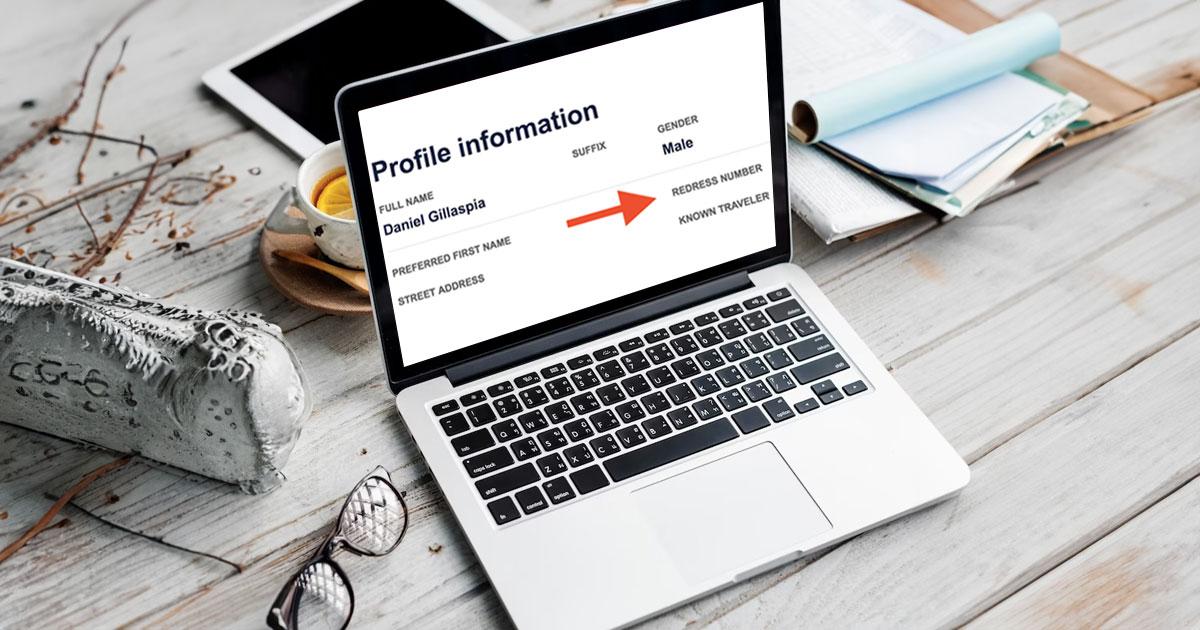What Is A Redress Number For Travel? Is It Needed & How To Get One?

Traveling to and from the United States comes with strict security measures designed to keep passengers and the country safe. While these measures are important, they can sometimes cause complications for travelers, especially if someone is mistakenly flagged as a potential risk. To help address these issues, the Department of Homeland Security (DHS) has introduced a “Redress Number.” This number is meant to ease the process for those who encounter difficulties while traveling.
What is a Redress Number?
A Redress Number, also referred to as a Redress Control Number, is a distinct identifier assigned by the Transportation Security Administration’s (TSA) Secure Flight program. It is designed to match travelers with their respective case numbers to simplify the watchlist matching process. The primary objective of the control number is to prevent the misidentification of travelers as potential security risks, thereby minimizing unnecessary delays and additional screening during their travels.
Is a Redress Number the Same as a Known Traveler Number?
Although both a Redress Number and a Known Traveler Number (KTN) are travel identification numbers provided by the Department of Homeland Security (DHS), they have separate purposes and cannot be used interchangeably.
A Redress Number is designed to help travelers who have experienced difficulties during security screenings at transportation hubs. Its purpose is to reduce misidentifications and simplify the watchlist matching process, making travel easier for those who have faced security challenges in the past.
Conversely, a Known Traveler Number is linked to trusted traveler programs like TSA PreCheck, NEXUS, Global Entry, and SENTRI. Travelers approved for these programs can access expedited security lines, allowing them to bypass certain screening procedures and enjoy a quicker journey through airports and border crossings. The Known Traveler Number is specifically used to identify travelers who are part of these trusted traveler programs.
Do I Need a Redress Number for Travel?
A control number can be very helpful for travelers who face challenges during security screenings or when crossing U.S. borders. While most travelers won’t need one, it can be a great asset for those who have had specific security issues. If you’ve experienced problems like being denied or delayed boarding, frequent secondary screenings, or trouble printing your boarding pass, it might be a good idea to consider applying for a control number through the DHS Traveler Redress Inquiry Program (DHS TRIP).
One key situation that calls for a redress number is if you’re denied entry into the United States. This can be really stressful, as it disrupts your travel plans and leads to significant inconveniences. Similarly, getting incorrect denials on your ESTA (Electronic System for Travel Authorization) can create unnecessary complications and delays during your trip.

For foreign students or exchange visitors, issues related to their status can also lead to travel difficulties. By applying for a control number, these individuals can seek resolution for past incidents and potentially prevent future complications during their travels. A redress number aims to create a smoother and more hassle-free travel experience for those who have faced security-related issues in the past.
How To Apply for One?
- Go to the DHS Traveler Redress Inquiry Program (DHS TRIP) website to start your application.
- Fill out the form with detailed information about the incidents you’ve encountered while traveling that led to security issues. While specific flight details aren’t mandatory, providing them can help speed up the process.
- Include essential details such as your full name, birthdate, birthplace, gender, height, weight, hair color, and eye color.
- If you’re a non-U.S. citizen, attach copies of the biographical pages from your unexpired passport or any U.S. government-issued ID. This helps verify your identity.
- Remember, applying for a redress number is completely free, making it accessible to all eligible travelers.
- After submitting your application, the DHS will review your information. While it may take some time, eligible travelers will receive their control number for future travels.
Do I Still Need a Redress Number If I’m Not a U.S. Citizen?
Yes, non-U.S. citizens are equally eligible to apply for a redress number if they have encountered security-related issues during their travels. The DHS TRIP program considers incidents faced by both U.S. citizens and non-citizens when processing control number applications. Regardless of nationality, travelers who have experienced difficulties during security screenings or while crossing U.S. borders can seek resolution and smoother travel experiences by obtaining a redress number.
It is essential to note that the redress program is inclusive and does not discriminate based on citizenship. All eligible travelers can benefit from the control number to mitigate security-related travel woes and enhance their overall travel experiences.

